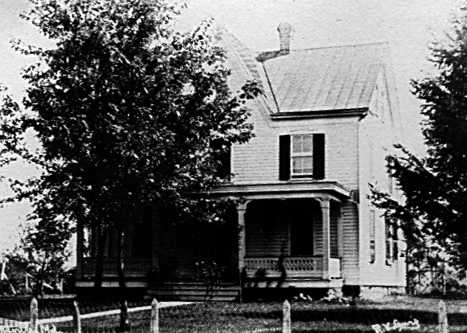HISTORY OF THE TOWN
(Information and Pictures courtesy of the Laytonsville Historical Center)
Laytonsville has stood as a crossroad to the history of Maryland for over two centuries. The intersection of the northern district of the town provides a route to the major metropolitan areas of the state-- Damascus and Frederick County, to the east to Baltimore, to the south toward Washington, D.C., and to the west the Potomac River. Although in January 1998 Laytonsville is still a cozy town, its small size, 614 acres and a population of 295, belies its long and interesting history.
Laytonsville was originally known as Cracklintown. This name originated from the popular cracklin bread, which was baked in the locale. This recipe, essentially a bacon corn bread, also leant the entire area the name of Cracklin District. The original town extended beyond Laytonsville’s current boundaries, along Sundown Road toward the Hawlings River. The earliest church, school, and store were in this area. The first major transit road through Cracklintown was built in the early 1800’s. This was the Brink-Sundown Road, referred to in documents from the early 1800’s as the “road from the mouth of the Monocacy to Ellicotts Mills.”
Route 108 appears in the historical record to have been added in the very early 1800’s. This crossroads provided a major artery for cattle and pigs headed for the bustling markets of Baltimore, and established the town as a comfortable stopover for the drovers. By the early nineteenth-century, substantial brick buildings were being constructed, such as the Layton House and a tavern across the road from. By 1850, the southeast corner of the crossroads was developed. Much of the rest of the town along Rt. 108 was not developed until the 1870’s.
A second reason for the development of the town was the successful farming in the area. Laytonsville farmers were blessed by the quality of the soil, a Manor loam or Chester loam, very fertile and well drained, but a soil which doesn't dry out too quickly. Under the loam lies a subsoil of red clay which assists in holding the moisture for roots even during hot, dry summers – great farming land.
Laytonsville was incorporated in 1892.
THE TOWN CENTER
Frank Bell's House Circ. 1900 - Today's Town Hall
The Bell House/Laytonsville Town Hall
May, 2002 marked the opening of Laytonsville’s new Town Hall. As the Town Hall, it became the center for the Mayor and Town Council activities but this building has long been part of the center of life and business in the area. Located right in the center of town, the house had always remained in the Bell family until the town acquired it in late 1999.
In 1883, William and Della Warfield Bell began construction on their new home. Fortunately, all the bills and receipts for construction of the house were stored away in a wall and uncovered in 1983 when the Seek family, descendants of the Bells, was adding a new room for their third son.
At the time it was built, the house was a major investment - $2,000.00. The lumber was purchased at Willet & Libbey in Washington, D.C., at a cost of $6.18 for 618 feet of 4” x 4” timber. The shingles cost $13.00 at J.W. Seay of Gaithersburg. Ten and a half pounds of nails for the construction job cost 84 cents. Bricks for the home cost $3.50 and each door was priced at $1.00.
